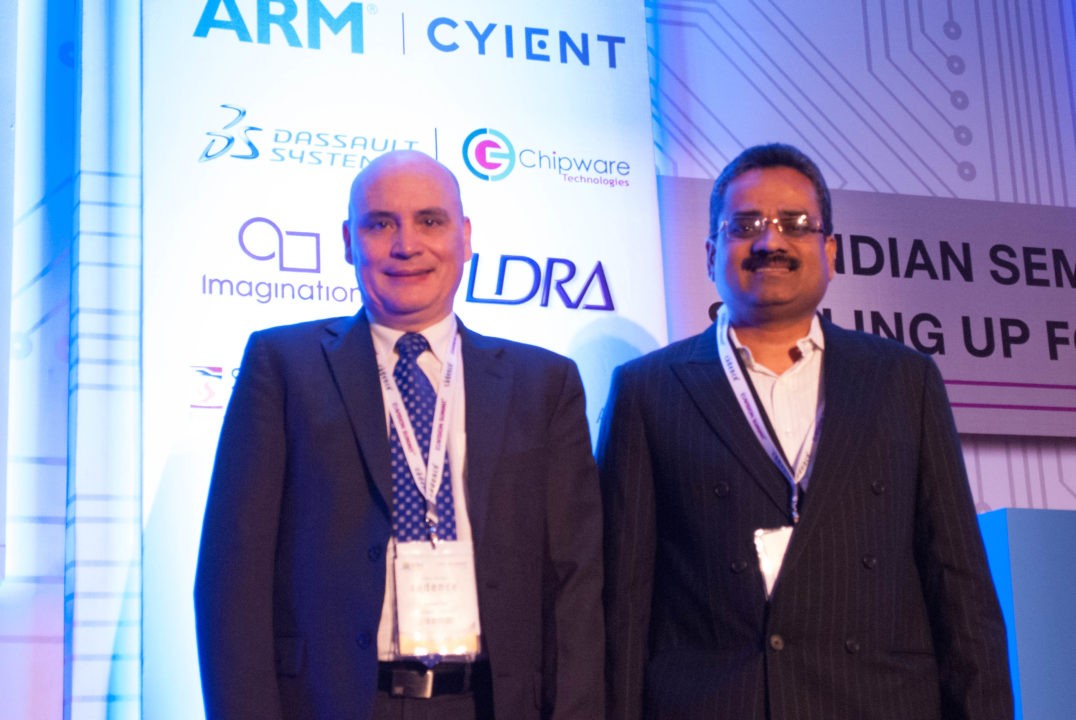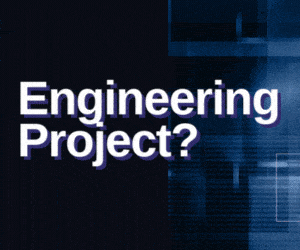In this interview with Priya Ravindran from EFY, we have Manuel Rei, Industry Director, Dassault Systemes and K Suresh Kumar, chief executive officer (CEO), Chipware Technologies, shedding light on their joint venture for providing 3D design software, the 3DEXPERIENCE platform!

Q. Let us begin by talking about your 3D experience platform.
A. Dassault Systemes is a 3D Experience company. We believe that in order to empower our customers, we need to identify the experience they desire. In keeping with this, we use our 12 brands in order to build a 3D Experience platform, starting from specifications, to the chip and end-customer experience. This is meant for our customers to imagine the experiences they want to provide to their customers. We operate across 12 industries.
Q. Tell us about 3D Experience for the semiconductor industry.
A. Nobody buys a semiconductor from a super market, but every electronics device you buy has one or more semiconductors in it. We built a tailored solution for the semiconductor industry, which we call ‘Silicon Thinking.’ Basically, we try to understand the market, our customers’ challenges and their problems; we then work on the R&D, devise the solution and provide it to our customers. For providing the solution in the Indian market, Dassault Systemes has partnered with Chipware Technologies, because they have the right business collection and technical support to promote our solutions, and sell our solutions in India.
Q. Take us through Silicon Thinking.
A. Silicon Thinking is a 3DEXPERIENCE platform in one single environment. We are talking about design engineering, manufacturing and even procurement. You need to know how much material to buy and which brand to opt for. The goal of silicon thinking is you use one single source of data, and make everything replaceable. When there is any problem, you can single-handedly troubleshoot it using this platform, find the issue, go back to see where all in the design the particular block is used, assess impact, and rectify. The advantage of Silicon Thinking is that it helps you take the right decision faster. A better gain on the dollars spent on research, and better testing capabilities is what the platform provides.
Q. Talking from a chip perspective, what enhancements would you need for creating 3DEXPERIENCE?
A. Let me make an analogy. Consider Make in India. For this, we first need prospect; second, we need an idea to make the dream come true; and the third would be to manufacture the idea. Silicon Thinking solution is built along similar lines. In Silicon Thinking, we first have applications to help our customers think of an idea, by looking around and surveying the market, the economy and the society. Next is understanding the requirements for implementing the idea and turning them into specifications like market specifications, social specifications, language and technical specifications. You can collect all of these inside the platform, categorise them and sum them up in order of priority. After you have a good idea of what you can do with your product, what is left is to architect the chip. You define the IP block you are going to use in the product, assemble the design and verify it as per the specification.
Once the design is finalised, you need to start prototyping and producing, and here, the third aspect of Silicon Thinking comes into the picture. There are processes that allow you to define the factors you are going to gauge from the product. One simple design can be used in different chips, different packaging and different functions, and these factors are manageable from the platform. Once you have the package, you can check if it meets the specifications. After you begin production, you can use the data to even optimise the application for manufacturing, using Silicon Thinking.
Q. How do you re-create the customer’s point-of-view?
A. We personally go talk to customers and check on how they are finding their experience on a platform like ours. It is most important to understand the problem right, as, when you give a customer the correct medicine for a problem, they come back to you the next time. Once we return to our offices, we discuss the problem at length with our research and development (R&D) personnel.
We try to incorporate what the customer wants, but we ask them to only state the problem and not offer any suggestions. We follow this as their views are either specific or very generic. Our aim is to provide a generic solution that can be customised as per the needs of the customer. At times, it also takes a bit of convincing from our end to show the customer that the solution offered and the words spoken are beneficial to them. We need to take into account the customers expectation, if you want to build a solution of the customer’s interest.
Q. Has there been any situation where a customer’s needs led to a feature being included in your tool?
A. About six years before, one of our customers modified our tool for a particular application. They had spent a lot of man-hours to figure out the perfect application, building each and every step, defining what the system should behave like. But things did not work out the way they wanted it to. When our engineers looked at it, they realised that although what they had produced was good, it was violating few design methodologies or rules, and product architecture. One such issue was with a process flow for a model they had built. After much deliberation, we gave them a wizard with the help of which they could create their own flow. They were very happy in the end. We ended up having the wizard in the product, instead of coding and delivering the flow that the customers made. 3D is a universal language, and sometimes, showing people virtually instead of using words works better.
Q. Is there any feature you have newly introduced into your platform?
A. There is one application called ‘Pinpoint’. This application helps engineers close down their designs in 3 critical areas. When you design a chip, especially a digital chip; you need to take care of three factors – timing, power and area. The lower/smaller each of these are, the better. Pinpoint is very valuable as it helps designers get reports of all three parameters on a single screen, so you can quickly identify focus areas. It is like a dashboard, and you can choose to access needed pop-ups once every three or four hours.
Q. What changes have users experienced after using pin point?
A. We provide the user with necessary information; we give them neither more nor less. When you have a lot of information, you do not know what to focus on, and when you have less information, you cannot get your job done. It helps users find the right balance.
Q. How is 3DEXPERIENCE different from other tools in the market?
A. Generally, there are separate tools for designing, testing, verifying, optimising and so on. You will have in log in and log out of one to access other information on other tools. With 3DEXPERIENCE, there is no need to get in and get out of the tool, as everything is present on one screen. You can also see the progress of your design at various levels.
Q. What are those factors influencing these innovations?
A. It is the technology that is influencing innovation. You need to have some killer product. Today, the chips being produced are not used to the fullest. For example, if you take a look at a mobile working on an octa-core processor, you rarely put all eight cores to maximum use.
Q. What would you say is the winning feature for a tool?
A. It is the experience derived by a user; the way he/she interacts with the tool. The touchscreen was introduced much before Steve Jobs introduced the iPhone. But apple came up with the idea of using it as a communication medium between humans and machines, in order to simplify the use of a smartphone and expand it to a broader range. Similarly, what a tool provider can do is work on the user interface. Human machine interface (HMI) has changed dramatically over the years and we have to make sure that the interface we provide is appealing for different domains of operation.
A designer or an engineer working on our tool should not care about the tool; he should focus on the idea. The more value you can provide in the tool, the easier will be his job. It is about providing the right capabilities. You need to predict what his role and intent are, and what he is trying to do. We try to customise the tool and provide access depending on the role of the user, say the CEO of a company or a worker in the Information Technology (IT) team.
Q. What is the biggest challenge in working with three-dimensional space?
A. What we have experienced is that customers should be understood. Understanding their need is most challenging. The technology allows you to be great; it seems to be easy to listen to customers, but every customer has a different idea. You have to identify the middle line to satisfy everyone. While there is technology and software engineering, we need to focus on the purpose of why we create, who we create for and what purpose our product will serve.






